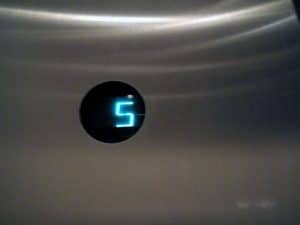5 Ductwork Design Factors Your Building Plans Must Consider

What does ductwork do?
Ductwork is the system of pipes that carries heated or cooled air from your furnace, heat pump or air conditioner to locations throughout your home or commercial building. These pipes are often large and bulky, square-shaped and constructed of galvanized steel. The duct network is usually hidden in the walls or floors of a home or is placed near the ceiling of a large commercial building. Ductwork is just as vital to indoor comfort as the HVAC unit itself; without ductwork, heated and cooled air has nowhere to go.
Potential ductwork problems
Without proper ductwork design, you could experience problems such as:
- Costly losses of heated and cooled air – Poorly designed and installed ductwork can lose as much as 40 percent of the conditioned air flowing through it. This wastes substantial amounts of energy and drives your utility bills higher than they should be.
- Inefficient and ineffective equipment operation – Ductwork with many bends, elbows, joints and other potential trouble spots won’t effectively distribute air and will reduce HVAC system efficiency.
- Reduced indoor air quality – Poorly designed ducts can pull pollutants and particulates into the airflow of your HVAC system and back into your indoor air. Bad ductwork design can also lead to back-drafting, which draws dangerous exhaust gases such as carbon monoxide back into your home or facility.
The five fundamentals of effective ductwork design
To avoid these expensive and potentially dangerous problems, make sure your ductwork follows the principles of safe and effective ductwork design.
- Use a standard configuration – The way you arrange and configure your ductwork will have a significant effect on its function. Ductwork isn’t a place to experiment; use a configuration that’s been tested and proven to be effective. For example, a radial design places the main HVAC unit in the center with supply and return ductwork radiating out from the unit like tire spokes. Trunk-and-branch designs use one or more large ducts (the trunk) with smaller supply and return ducts (the branches) attached.
- Make sure ducts are the correct size – Ductwork that’s too small won’t be able to carry enough air to heat or cool your building. Ducts that are too large can lose both air and energy, cutting system efficiency and wasting money. Use trusted industry standards and procedures, such as those published by ASHRAE, to size your ducts.
- Make sure there are enough return ducts – Supply ducts carry conditioned air to your building, but the system also requires enough return ducts to bring expended air back to the HVAC unit to be conditioned again. Each room that receives heating or cooling should have at least one return duct. Return air grilles and ducts can also be installed in areas such as hallways or in large rooms.
- Be careful where you install ducts – Don’t install ductwork in areas of your building that don’t receive heating or cooling or in outdoor locations. Substantial amounts of energy can be lost through the relatively thin metal of the ductwork.
- Protect ductwork from energy loss – Make sure all ductwork sections fit together tightly without gaps or loose segments. Seal all connections with mastic or metal tape. Cover the ductwork with insulation, such as rigid fiberboard or standard blanket-type insulation.
Our goal is to help educate our customers about Plumbing, HVACR, Fire Protection and Alarm Systems in Mechanical, Commercial and Residential settings. For more information on the importance of ductwork design or to view projects we’ve worked on, visit our website!
Image Credit: mrbill







